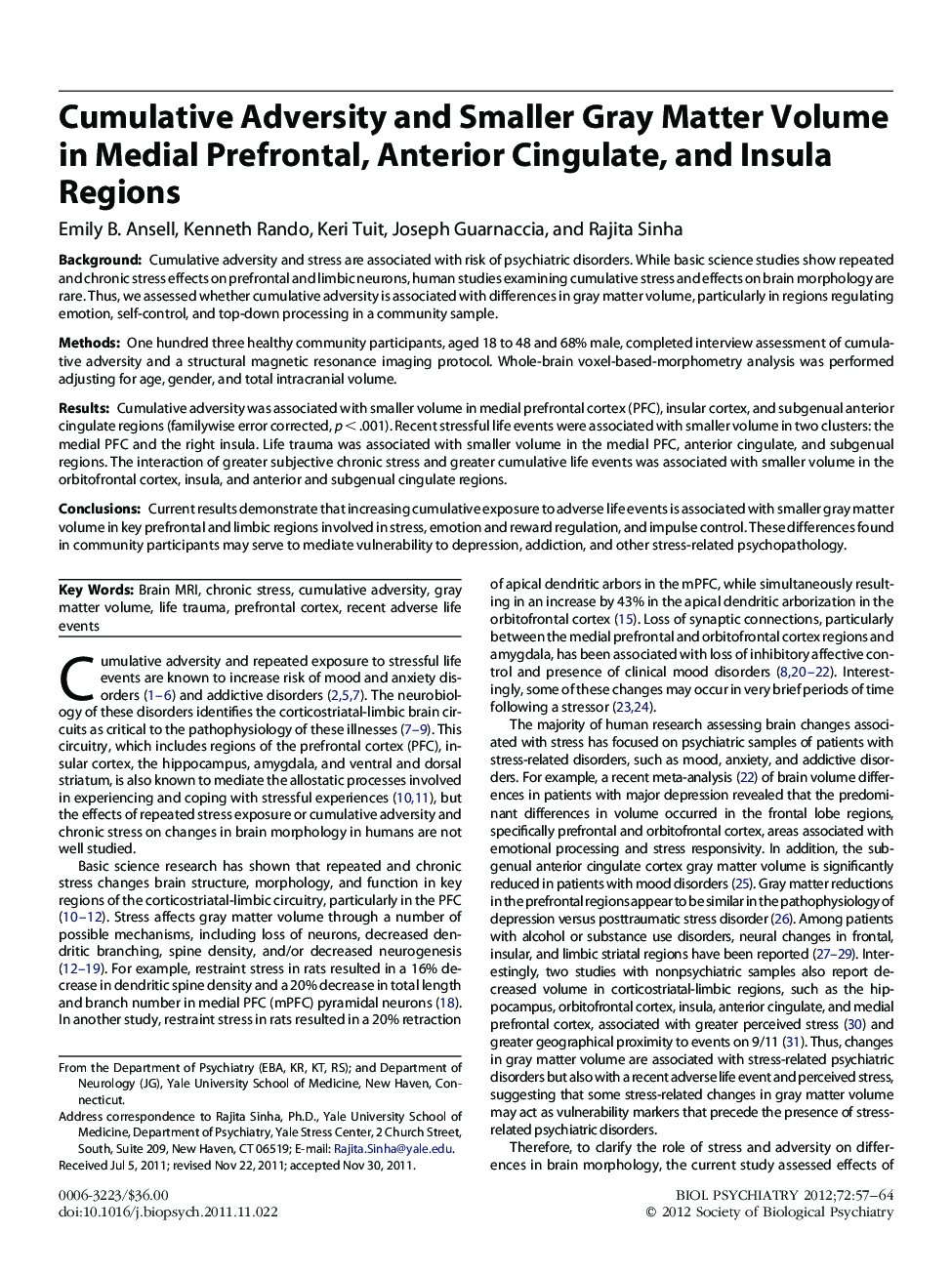| کد مقاله | کد نشریه | سال انتشار | مقاله انگلیسی | نسخه تمام متن |
|---|---|---|---|---|
| 4178159 | 1276476 | 2012 | 8 صفحه PDF | دانلود رایگان |

BackgroundCumulative adversity and stress are associated with risk of psychiatric disorders. While basic science studies show repeated and chronic stress effects on prefrontal and limbic neurons, human studies examining cumulative stress and effects on brain morphology are rare. Thus, we assessed whether cumulative adversity is associated with differences in gray matter volume, particularly in regions regulating emotion, self-control, and top-down processing in a community sample.MethodsOne hundred three healthy community participants, aged 18 to 48 and 68% male, completed interview assessment of cumulative adversity and a structural magnetic resonance imaging protocol. Whole-brain voxel-based-morphometry analysis was performed adjusting for age, gender, and total intracranial volume.ResultsCumulative adversity was associated with smaller volume in medial prefrontal cortex (PFC), insular cortex, and subgenual anterior cingulate regions (familywise error corrected, p < .001). Recent stressful life events were associated with smaller volume in two clusters: the medial PFC and the right insula. Life trauma was associated with smaller volume in the medial PFC, anterior cingulate, and subgenual regions. The interaction of greater subjective chronic stress and greater cumulative life events was associated with smaller volume in the orbitofrontal cortex, insula, and anterior and subgenual cingulate regions.ConclusionsCurrent results demonstrate that increasing cumulative exposure to adverse life events is associated with smaller gray matter volume in key prefrontal and limbic regions involved in stress, emotion and reward regulation, and impulse control. These differences found in community participants may serve to mediate vulnerability to depression, addiction, and other stress-related psychopathology.
Journal: Biological Psychiatry - Volume 72, Issue 1, 1 July 2012, Pages 57–64